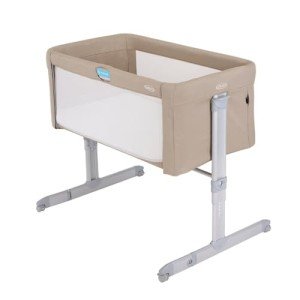It's Enough! 15 Things About Bedside Cot For Co-Sleeping We're Overheard
The Benefits and Considerations of Bedside Cots for Co-Sleeping
Co-sleeping has actually become a popular option for numerous new parents who look for to maintain close distance to their infants throughout the night. In addition to standard co-sleeping practices, bedside cots are acquiring traction as an option that provides both the comfort of nearness and the safety of different sleeping spaces. This article aims to explore the concept of bedside cots for co-sleeping, highlighting their benefits, potential downsides, suggestions for choice, and common issues.
Understanding Bedside Cots
Bedside cots, also referred to as side-sleepers or co-sleepers, are specially created cribs that are affixed to the side of the parents' bed. Bedside Cot For Newborn enable parents to maintain easy access to their infants in the evening while offering a different sleeping location that can improve security and convenience.
Functions of Bedside Cots
- Size and Design: Bedside cots are frequently smaller than standard cribs however still offer ample room for an infant. Many designs have adjustable heights to match the bed.
- Side Panels: Many designs feature detachable or mesh side panels that enable for safe visual tracking of the baby, boosting parents' ability to respond to their baby's needs rapidly.
- Stability and Safety: Bedside cots are developed with stability in mind, including security anchors or straps that protect the cot to the parent's bed.
- Relieve of Access: Parents can easily reach over to comfort or feed their baby without having to get out of bed, assisting in nighttime breastfeeding or relaxing.
Benefits of Using Bedside Cots for Co-Sleeping
- Enhanced Bonding: Proximity to the baby promotes emotional connection and bonding, which is important throughout the early phases of development.
- Easier Nighttime Care: Nighttime feeding and soothing ended up being significantly much easier with a bedside cot, as parents can merely lean over to take care of their baby's needs.
- Increased Safety: Bedside cots minimize the risk of suffocation or accidental rolls that can take place with traditional co-sleeping directly in the parental bed.
- Private Sleep Space: The paperwork supports that having their own sleeping space can assist infants sleep better in terms of less disruptions from parents.
- Transitioning: A bedside cot can be a handy transitional tool as babies grow and begin to relocate to their own spaces.
Function
Benefits
Enhanced Bonding
Closer physical presence
Easier Access
Quick action to requirements
Increased Safety
Decreased threat of mishaps
Private Space
Less disruption in the evening
Streamlined Transition
Simpler transfer to independent sleeping
Considerations Before Choosing a Bedside Cot
While bedside cots offer many advantages, possible users should consider the list below aspects:
- Size of Bed: Ensure that the cot fits nearby to the bed without causing discomfort or overcrowding.
- Spending plan: Prices can differ substantially amongst different brands and designs, so think about spending plan constraints thoroughly.
- Security Standards: Check that the cot meets all security regulations to guarantee it is totally free from dangerous products and consists of necessary safety functions.
- Material: Non-toxic finishes and materials are most importantly important for infant health.
- Infant's Age and Weight: Some cots have weight limitations, and parents ought to select appropriately based on their baby's development.
Tips for Selecting a Bedside Cot
- Check out Reviews: Look for user feedback and security ratings.
- Inspect for Certifications: Ensure the cot abides by security standards.
- Examine the Design: Choose a design that matches your bed room design while making sure functionality.
- Think about Accessibility: Look for designs that enable easy reach however reduce the danger of presenting.
- Test Stability: Ensure that the cot is steady and safe and secure when connected to the bed.
Typical FAQs About Bedside Cots for Co-Sleeping
Q1: Are bedside cots safe for co-sleeping?
A1: When used correctly, bedside cots are designed to offer a safe sleeping alternative for infants while making it possible for close proximity to parents. Constantly ensure to secure the cot correctly to avoid motions that could result in accidents.
Q2: At what age can I begin using a bedside cot?A2: Many parents start utilizing bedside cots right after the baby is born. Nevertheless, it is vital to seek advice from a doctor concerning your infant's preparedness for co-sleeping, especially if they were born too soon. Q3: Can I use a routine
**crib for co-sleeping? A3: While routine cribs can be used, they do not supply the same level of availability and security as bedside cots, making bedside alternatives more favorable for co-sleeping. Q4: What if my baby rolls over?A4: Most bedside cots are developed with security functions that minimize risks if a baby rolls. Additionally,
they are usually low enough that a roll would not lead to a substantial drop. Q5: How do I shift my baby from a bedside cot to a routine crib? Bedside Crib For Babies : Gradually move your baby to a different crib in their own room after they end up being familiar with oversleeping the bedside cot. Start with naps in the crib while maintaining nighttime co-sleeping till they adjust. Bedside cots present a practical and much safer option to direct co-sleeping, offering various benefits in terms of benefit and security. They facilitate bonding
between infants and parents while decreasing the risks connected with standard co-sleeping practices. Parents looking for a method to keep their babies close in the evening should think about the advantages that bedside cots can use. With a cautious evaluation of options readily available, parents can develop a safe and comfortable sleep environment that supports their household's special needs.  **
**